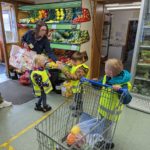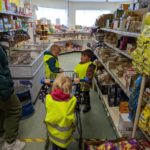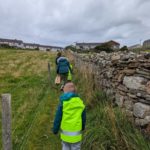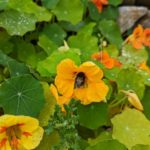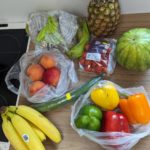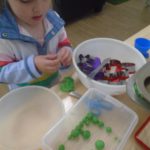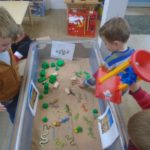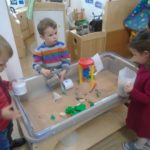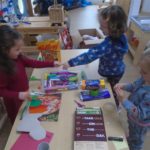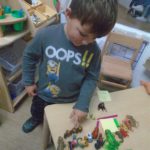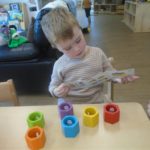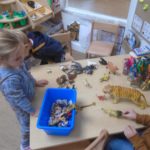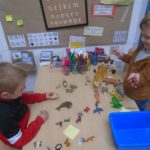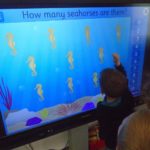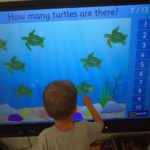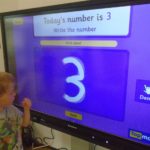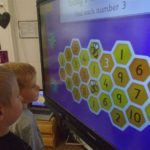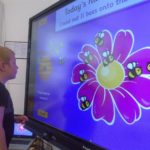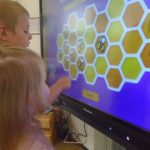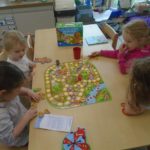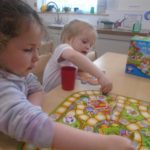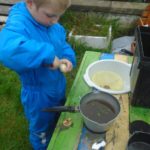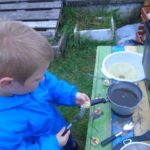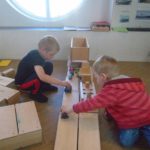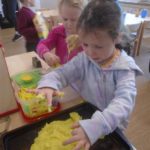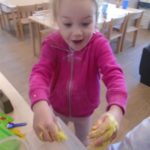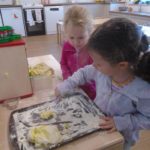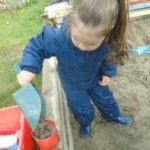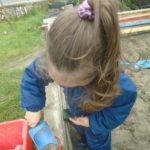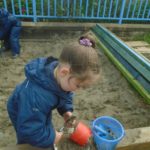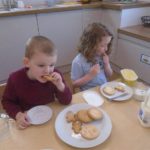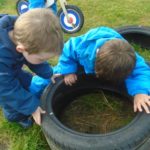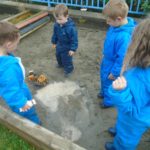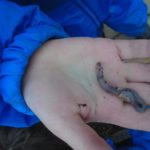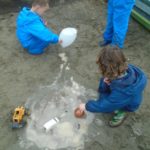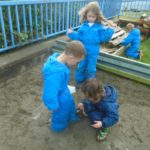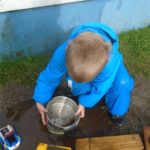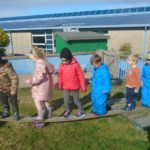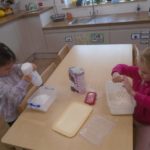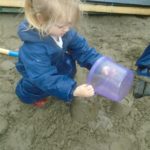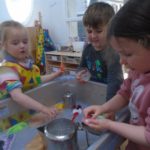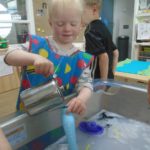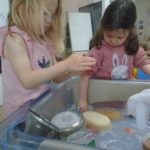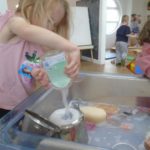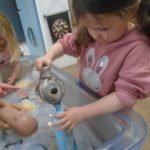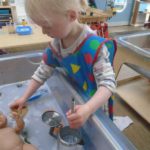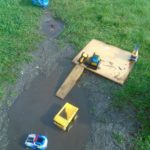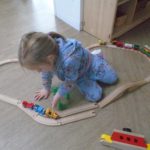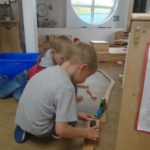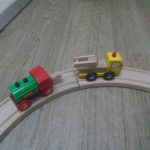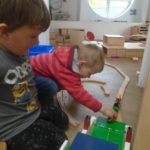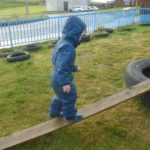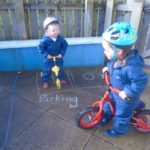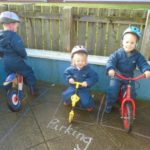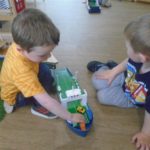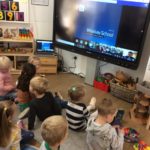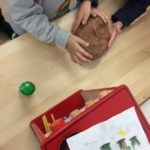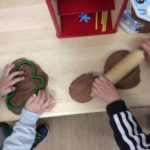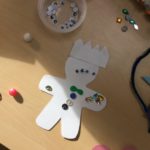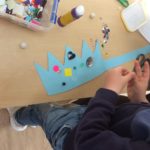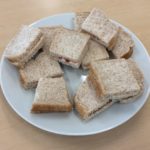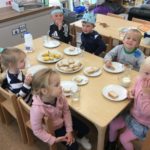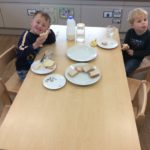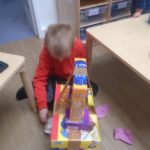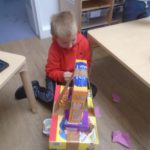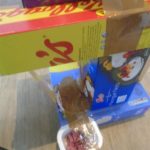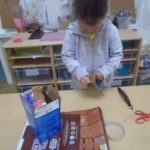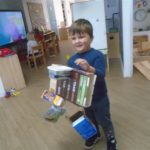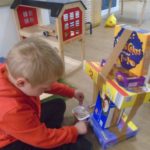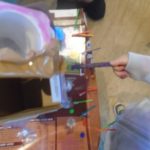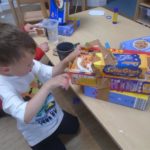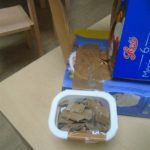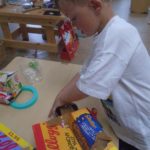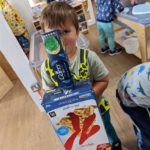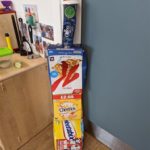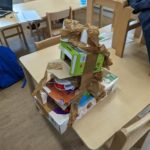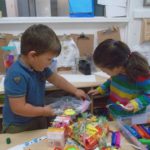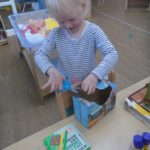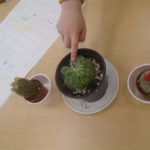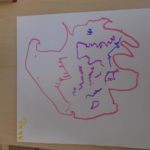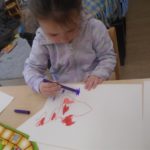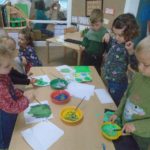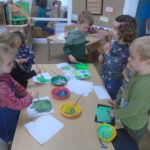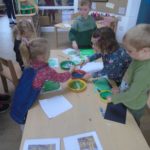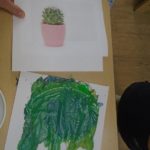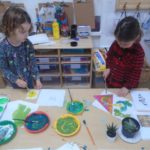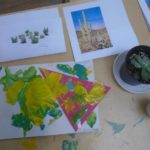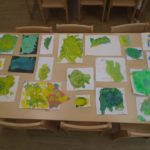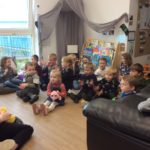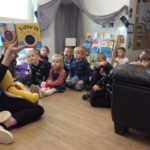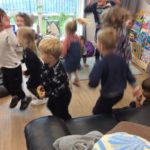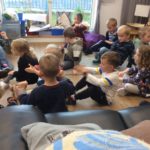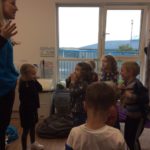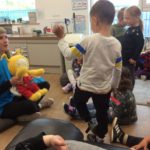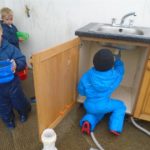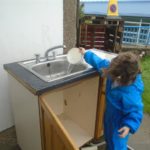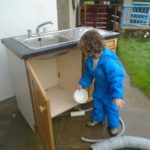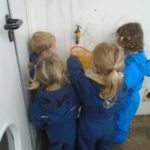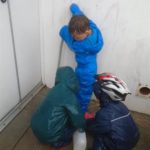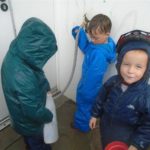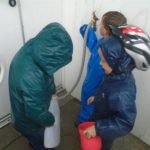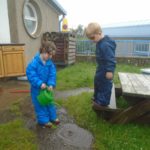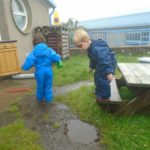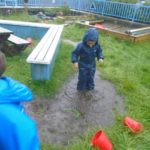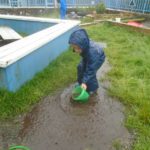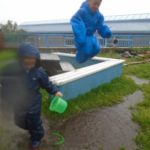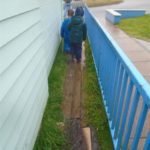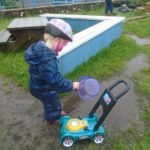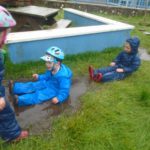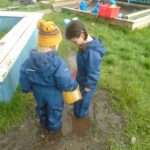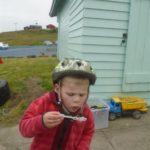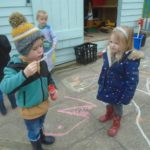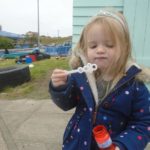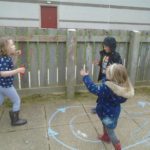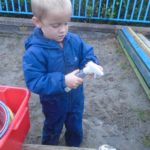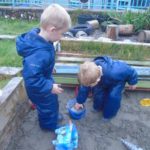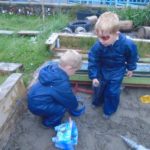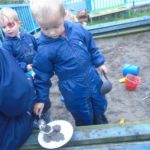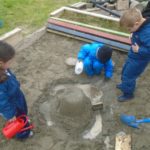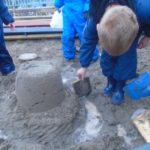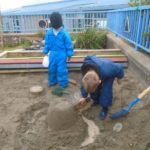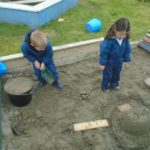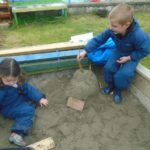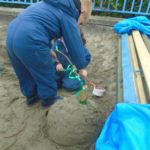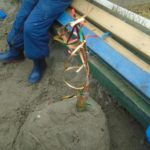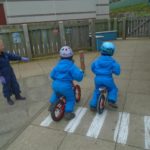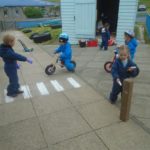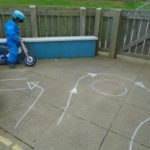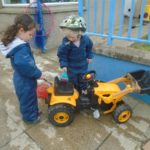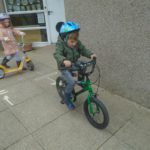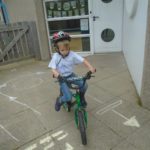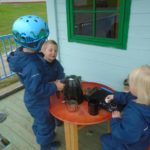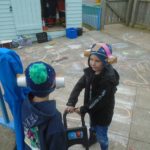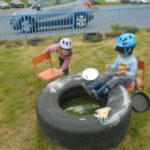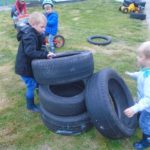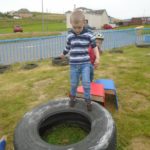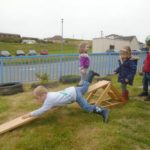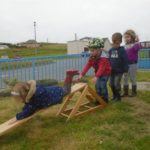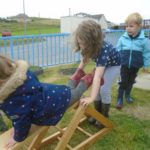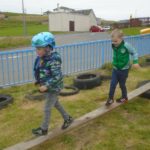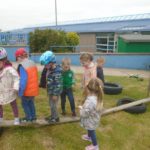This week we’d like to share some of the ways we’ve been enjoying learning outdoors over the past couple of weeks.
The appearance of a big sink proved to be a point of interest for a few days as we tried to connect pipes to it. We problem solved, shared our ideas and learned more about how the water flowed through the sink. Connecting pipes to the sink naturally led us to explore how water flowed in different context and in different ways. As we explored we took turns, shared, cooperated and negotiated. These are very important skills to learn for life! Water play helped us to develop our scientific knowledge as we experimented and discovered. We learned more about floating and sinking, how water moves and how the water always flowed downhill.
Mother nature provided us with A LOT of water last week too. Some of us were eager to get out in the heavy rain and to watch how puddles and streams naturally formed. Playing outdoors in weather like this can be emotionally therapeutic and help us to relax as well as develop our sensory awareness. We watched the water bounce repetitively, noticed how the puddles formed and listened to the sound of the rain hitting our hoods, roofs and other surfaces. We couldn’t resist experimenting with puddle jumping and puddle sitting to see how deep they were!
Blowing bubbles can also be a very relaxing activity. Blowing bubbles teaches us how to breathe out. Breathing out is a relaxing thing to do and is a strategy that we can learn to use to make ourselves calm throughout our lives.
We also used buckets and containers to combine water and sand. Scooping, pouring and squeezing allows us to build our fine and gross motor skills. As we play like this we begin to develop natural grip movements which grow more refined with time and repetition.
Some of us explored how to build very big sandcastles. Some sandcastles had windsocks on top to investigate how hard the wind was blowing and in what direction. Using sand, buckets and natural resources in this way develops our hand and eye coordination and stimulates our curiosity. When we carry heavy containers we develop large muscle groups and gross motor skills which we need for sitting still, listening and writing in the future. As we fill different sized buckets we naturally learn about measurement, capacity and mathematical language such as “full”, “top”, “too much” and “heavy/heavier”.
Our creativity and mathematical learning has not just been confined to playing with sand and water. We have also learned a lot through role play outdoors. We’ve steered various vehicles around roundabouts, stopped at traffic lights and zebra crossings, bounced over cattle grids, followed directions and negotiated space as part of our play. Using our wheeled toys outdoors also helps us develop awareness of speed, forces and direction as well as supports us to take turns, share space and co-operate. As we play we develop crucial skills that are needed for relationships in the future.
Other role play has included having picnics and mowing and strimming grass. As we play together we discover and build new vocabulary such as “mower”, “strimmer”, “engine”, “ear defenders”. As we play in pairs or groups we get opportunities to practice saying words out loud and string sentences together. This helps us to be able to structure more complicated sentences. As we become more competent in socialising during play our listening and talking skills improve and develop.
We have had to use our listening and talking skills and turn taking and sharing skills when using climbing and balancing equipment outdoors too. Jumping, climbing and balancing using big movements and big resources is great for building our core strength and stamina which we need for formal learning later in life. Using open ended natural resources like tyres and planks helps us to feel unrestricted, stimulates our imaginations and gives everyone an opportunity to feel successful whether it’s jumping high or far, balancing on a tyre or a plank or sliding down a chute in a different way.
As you can see our outdoor classroom is a very important place where much learning happens! We look forward to sharing more with you next week.


